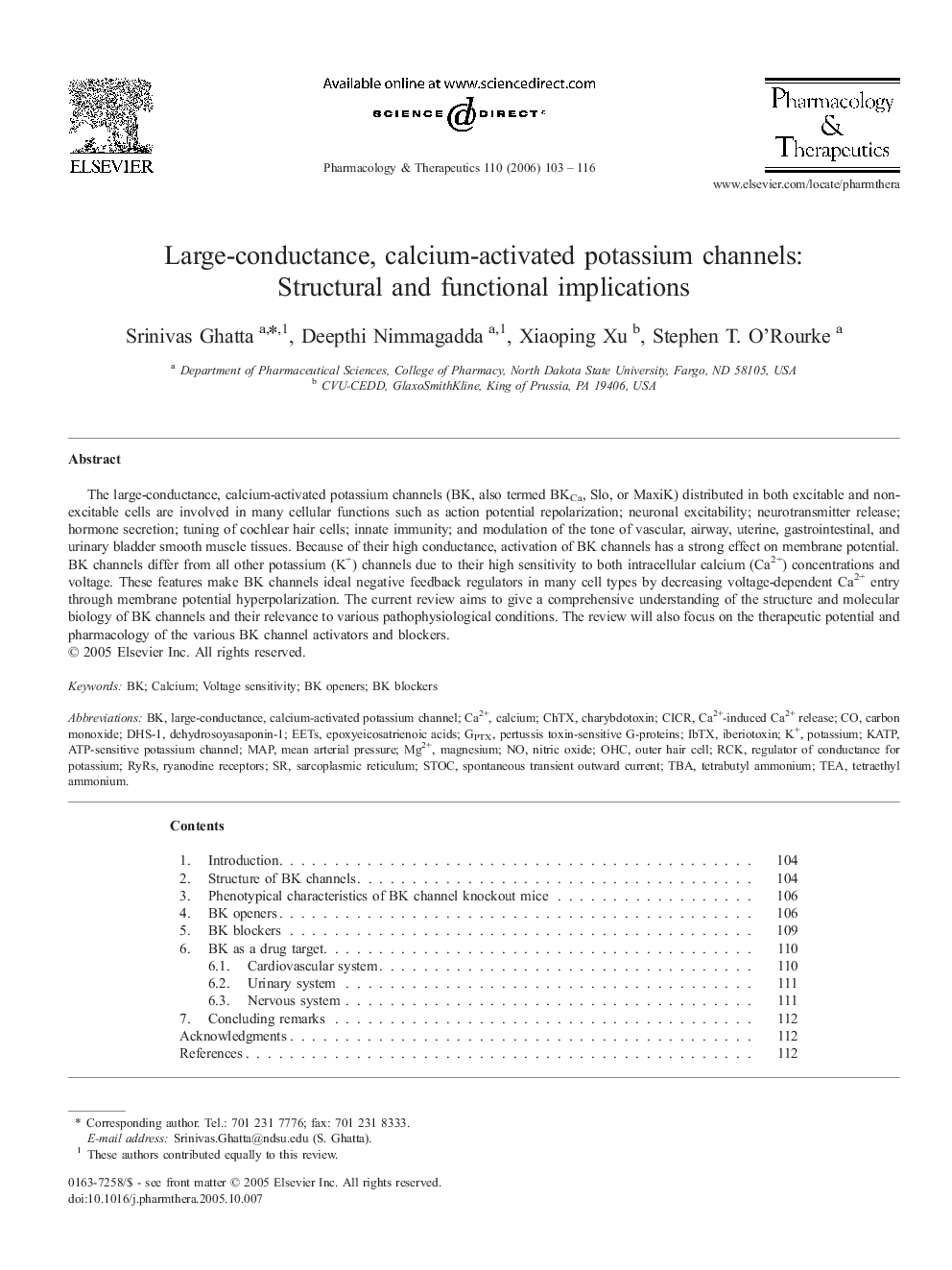| Article ID | Journal | Published Year | Pages | File Type |
|---|---|---|---|---|
| 2564345 | Pharmacology & Therapeutics | 2006 | 14 Pages |
Abstract
The large-conductance, calcium-activated potassium channels (BK, also termed BKCa, Slo, or MaxiK) distributed in both excitable and non-excitable cells are involved in many cellular functions such as action potential repolarization; neuronal excitability; neurotransmitter release; hormone secretion; tuning of cochlear hair cells; innate immunity; and modulation of the tone of vascular, airway, uterine, gastrointestinal, and urinary bladder smooth muscle tissues. Because of their high conductance, activation of BK channels has a strong effect on membrane potential. BK channels differ from all other potassium (K+) channels due to their high sensitivity to both intracellular calcium (Ca2+) concentrations and voltage. These features make BK channels ideal negative feedback regulators in many cell types by decreasing voltage-dependent Ca2+ entry through membrane potential hyperpolarization. The current review aims to give a comprehensive understanding of the structure and molecular biology of BK channels and their relevance to various pathophysiological conditions. The review will also focus on the therapeutic potential and pharmacology of the various BK channel activators and blockers.
Keywords
RyRsEETsiberiotoxinIbTXOHCKATPChTxTBARCKSpontaneous transient outward currentSTOCCa2+Mg2+Tetraethyl ammoniumepoxyeicosatrienoic acidsCa2+-induced Ca2+ releaseVoltage sensitivitySarcoplasmic reticulumouter hair cellmean arterial pressurecarbon monoxideMagnesiummapNitric oxidePotassiumcharybdotoxinTEAATP-sensitive potassium channelCalciumCICRRyanodine receptors
Related Topics
Health Sciences
Pharmacology, Toxicology and Pharmaceutical Science
Pharmacology
Authors
Srinivas Ghatta, Deepthi Nimmagadda, Xiaoping Xu, Stephen T. O'Rourke,
